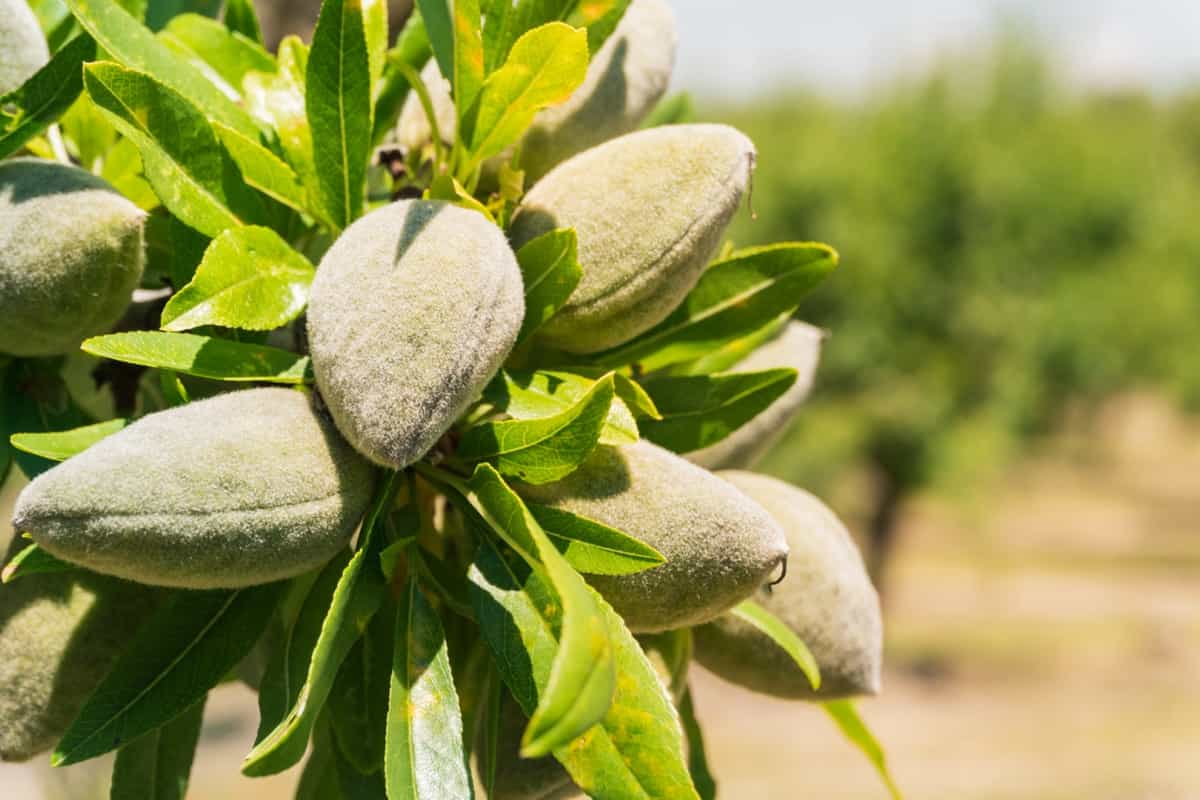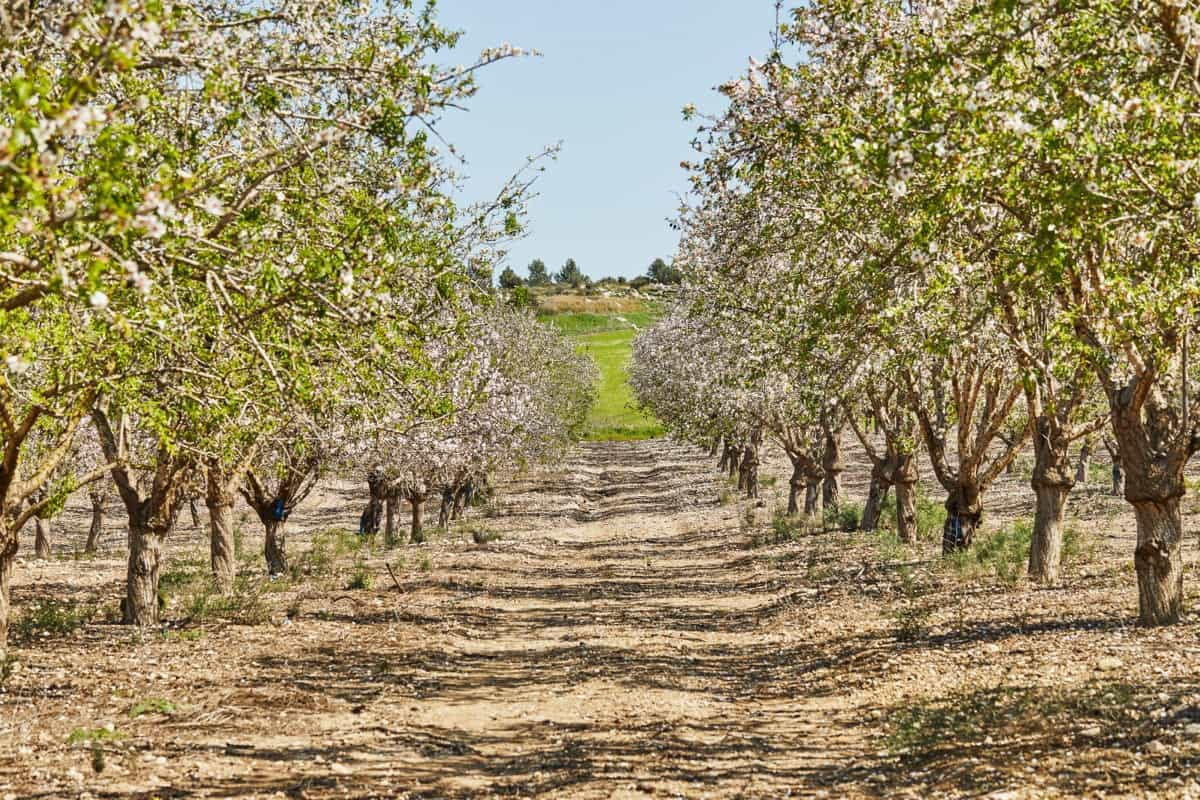Drip irrigation has emerged as a crucial technology in modern agriculture, offering efficient water management for crops like almonds. This method ensures precise water delivery to plants, promoting optimal growth while conserving resources. Exploring the installation costs of drip irrigation for almond plantations is essential for farmers considering this technology.

Determining the initial investment for drip irrigation in almond plantations involves considering various factors. The cost per acre can vary based on factors like land topography, water quality, and the type of drip system chosen. On average, installation costs can range from Rs. 1,50,000 to Rs. 1,80,000 per acre. Factors contributing to this include the cost of drip lines, emitters, filters, pumps, and controllers. Farmers need to conduct a detailed feasibility study to assess their specific requirements and budget constraints.
Evaluate the Cost of Drip Lines and Emitters for Almond Fields
The cost of drip lines and emitters is a significant component of the overall cost of drip irrigation for almond fields. Drip lines, responsible for delivering water to plants, can cost between Rs. 5 to Rs. 10 per meter, depending on quality and brand. Emitters, which regulate water flow, are priced at Rs. 2 to Rs. 5 per unit.
The total cost per acre for these components can range from Rs. 20,000 to Rs. 25,000, considering the average spacing of emitters and drip lines. Farmers should prioritize quality to ensure the longevity and efficiency of the drip system. Selecting reliable suppliers and understanding the warranty and maintenance terms are crucial steps in making informed decisions. Additionally, exploring bulk purchase options and negotiating with suppliers can contribute to cost savings.
Analyze the Expense of Filters and Pressure Regulators in Drip Irrigation Systems
Filters and pressure regulators are integral components of drip irrigation systems, crucial for maintaining system integrity and ensuring efficient water distribution. The cost of these components typically ranges from Rs. 15,000 to Rs. 20,000 per acre. Filters prevent clogging caused by debris, while pressure regulators maintain optimal water pressure, safeguarding the system from damage. Investing in high-quality filters and regulators is essential for the longevity and effectiveness of the drip irrigation setup, reducing maintenance costs and ensuring consistent crop hydration.
Estimate the Cost of Automation and Control Systems in Drip Irrigation for Almond
Automation and control systems enhance the precision and efficiency of drip irrigation in almond farming. These systems typically include controllers, sensors, and valves. The cost of automation can range from Rs. 25,000 to Rs. 35,000 per acre, depending on the level of sophistication and features. Controllers, which manage irrigation schedules, can cost Rs. 10,000 to Rs. 15,000.
In case you missed it: Fertilizer Requirements and Recommendations for Almonds: Management Practices for Optimal Yield

Sensors, such as soil moisture or weather sensors, add Rs. 8,000 to Rs. 10,000 per unit. Valves for automated control are priced between Rs. 7,000 and Rs. 10,000 per valve. Investing in automation pays off in terms of water conservation and improved crop health. Automated systems allow farmers to tailor irrigation schedules precisely to the specific needs of almond trees, optimizing water usage and potentially reducing operational costs over time.
Assess the Price of Pumps and Pumping Stations for Drip Irrigation in Almond Farming
Pumps and pumping stations play a crucial role in delivering water from the source to the drip irrigation system in almond farming. The cost of pumps depends on factors such as capacity, efficiency, and power source. Prices can range from Rs. 30,000 to Rs. 35,000 per acre. Additionally, the installation of pumping stations, including pipelines and connectors, adds to the overall expense. Farmers must carefully assess their water source and the required pumping capacity to determine the most suitable pump for their almond plantation.
Explore the Cost of Fertilizer and Nutrient Injection Systems in Drip Irrigation for Almond
Integrating fertilizer and nutrient injection systems into drip irrigation for almond cultivation enhances the precision and efficiency of nutrient delivery to plants. The cost of these systems varies based on factors such as system capacity, type of fertilizers used, and the level of automation. On average, the expense for fertilizer and nutrient injection systems can range from Rs. 18,000 to Rs. 25,000 per acre.
The initial investment may be influenced by the choice between liquid and granular fertilizers, as well as the complexity of the injection system. The use of such systems ensures that almond trees receive the right nutrients in the right quantities, promoting optimal growth and maximizing crop yield.
Calculate the Labor and Installation Costs for Drip Irrigation in Almond Plantations
Labor and installation costs are critical components in the overall investment of drip irrigation for almond plantations. Skilled labor is required for the installation of drip lines, emitters, filters, pumps, and control systems. Installation costs can range from Rs. 15,000 to Rs. 20,000 per acre, depending on factors such as terrain, system complexity, and the level of automation. It’s essential to factor in the expertise needed for proper installation to avoid future complications.
Factor the Maintenance and Repair Expenses for Drip Irrigation Systems in Almond Farming
Maintenance and repair are ongoing considerations for drip irrigation systems in almond farming. Routine maintenance involves checking and cleaning filters, inspecting emitters, and ensuring proper system functionality. On average, maintenance costs can range from Rs. 7,000 to Rs. 10,000 per acre annually. It’s crucial to budget for regular inspections to prevent issues that may compromise the system’s efficiency and the health of almond plants.
In case you missed it: 1-Acre Almond Farming Cost and Profit: Production Economics and Cultivation Project Report

Along with routine maintenance, unexpected repairs may arise, such as fixing leaks or replacing damaged components. Setting aside funds for potential repairs, which can range from Rs. 10,000 to Rs. 15,000 per acre per year, ensures that the drip irrigation system remains operational throughout the almond growing season. Proactive and timely maintenance not only extends the life of the system but also contributes to sustainable water management practices in almond farming.
Energy Costs Associated with Drip Irrigation in Almond Cultivation
Drip irrigation in almond cultivation incurs energy costs primarily related to the operation of pumps that transport water through the system. The energy requirements depend on factors like pump capacity, the distance water needs to be transported, and system pressure. Energy costs can range from Rs. 12,000 to Rs. 15,000 per acre annually.
Opting for energy-efficient pumps and, where feasible, integrating renewable energy sources can mitigate these costs and align with sustainable agricultural practices. Additionally, the use of automated control systems can optimize energy usage by scheduling irrigation during off-peak electricity hours.
Drip Irrigation Cost for Almond Plantation Per Acre
| Item | Cost Range (Rs.) |
| Drip Lines & Emitters | 20,000 to 25,000 |
| Filters and Pressure Regulators | 15,000 to 20,000 |
| Automation and Control Systems | 25,000 to 30,000 |
| Pumps and Pumping Stations | 30,000 to 35,000 |
| Fertilizer and Nutrient Injection Systems | 18,000 to 25,000 |
| Labor and Installation Costs | 15,000 to 20,000 |
| Maintenance and Repair Expenses | 17,000 to 25,000 |
| Energy Costs | 12,000 to 15,000 |
Government Subsidy for Drip Irrigation in Almond Plantations
In India, farmers can avail of subsidies under the PDMC component under the PMKSY scheme, covering a significant portion of the drip irrigation installation costs and reducing the financial burden. The farmer will receive financial assistance from 45% to 55% under this scheme. Subsidies are typically offered on drip irrigation components like drip lines, emitters, pumps, and automation systems. These initiatives aim to promote water-efficient technologies, enhance crop yields, and address environmental concerns.
In case you missed it: 9 Causes of Dying Almond Trees and How to Fix Them?

Compare the Overall Operational Costs of Drip Irrigation vs. Traditional Methods in Almond Farming
Comparing the overall operational costs of drip irrigation and traditional methods in almond farming reveals distinct advantages for drip systems. While the initial investment in drip irrigation may be higher, the efficiency gains result in notable cost savings over time. Drip irrigation minimizes water wastage, reduces labor requirements, and optimizes nutrient delivery, contributing to increased almond yield and quality.
Traditional methods, such as flood or furrow irrigation, often lead to higher water usage, increased labor demands, and the potential for nutrient runoff. Though the initial investment in drip irrigation may be higher, the long-term operational costs are generally lower due to improved resource utilization.
Conclusion
In conclusion, the cost analysis of drip irrigation for almond plantations underscores its significance in optimizing water use. While installation expenses vary, government subsidies can alleviate financial burdens, promoting sustainable practices. The upfront investment in drip irrigation is an investment in long-term efficiency, resource conservation, and enhanced agricultural productivity.
- Ultimate Guide to Ossabaw Island Hog: Breeding, Raising, Diet, and Care
- Ultimate Guide to Juliana Pig: Raising Facts, Size, Diet, Care, and Lifespan
- Raising Lleyn Sheep: Disadvantages, Price, Uses, Characteristics, and Care
- Ultimate Guide to Meishan Pig: Breed Facts, Breeding, Raising, and Care
- Ultimate Guide to Teacup Pigs: Raising, Diet, Lifespan, Cost, and Care
- Guide to Raising Poll Dorset Sheep: Facts, Profile, Characteristics, Uses, and Care
- Ultimate Guide to Bighorn Sheep: Characteristics, Diet, Lifespan, Breeding, and Lifecycle
- Ultimate Guide to Raising Katahdin Sheep: Farming Facts, Breed Profile, Uses, and Care
- Ultimate Guide to Raising Oreo Cows: Belted Galloways Farming Facts, Profile, Uses, and Care